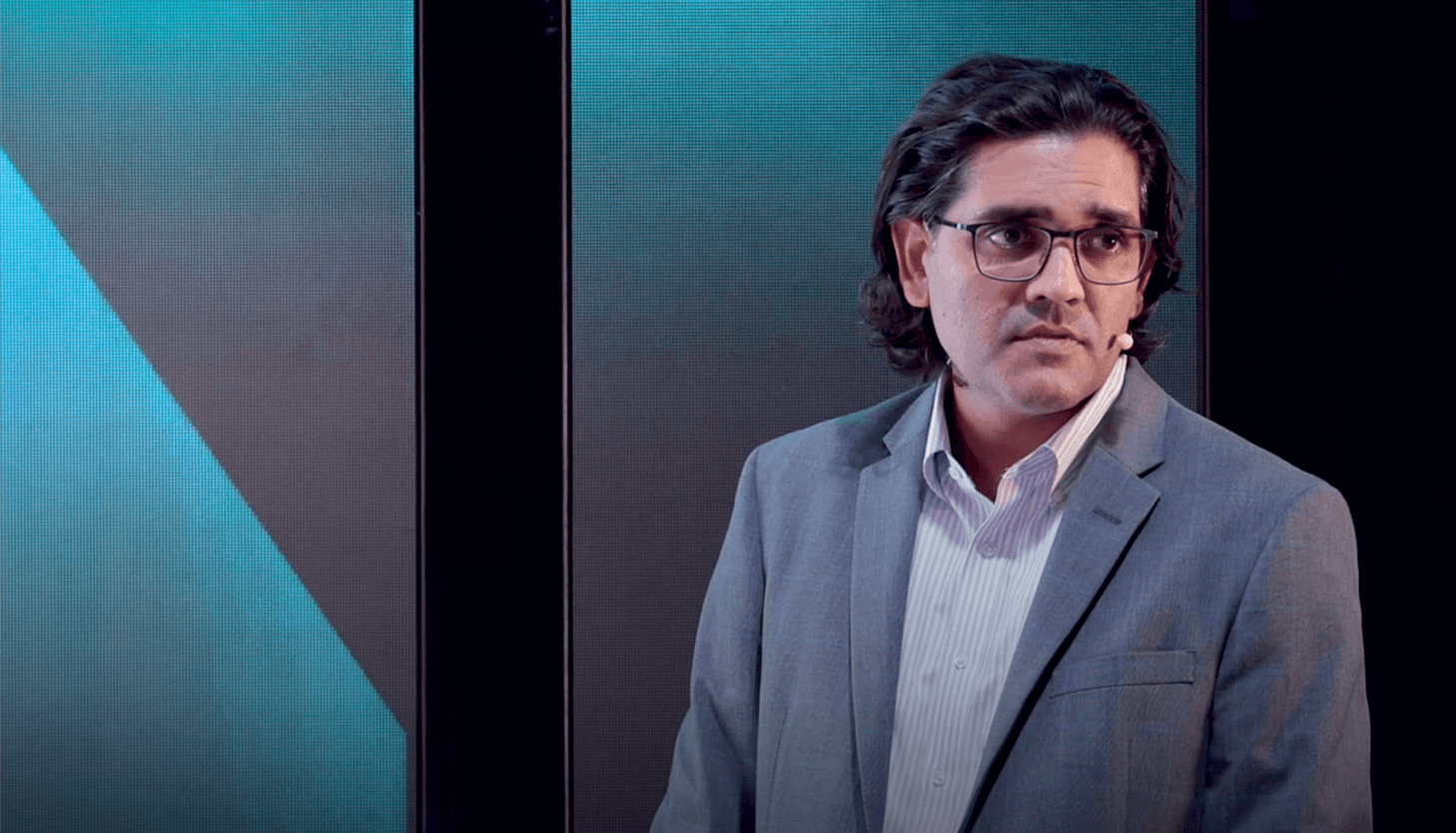
Given that outflow resistance occurs throughout the outflow system – namely, trabecular meshwork (TM), Schlemm’s canal, and collector channels – optimal interventions should address all three levels of this continuum. Does canaloplasty measure up to this challenge? Let’s examine each region in turn.
In POAG eyes, up to 75 percent of outflow resistance may be associated with the meshwork, especially the juxtacanalicular portion – a consequence of accumulated extracellular matrix proteins, which fibrose the meshwork and compromise its function (1, 2, 3, 4, 5, 6) (see box below). Because this fibrosis is irreversible, we must intervene early if we are to preserve meshwork function. At the same time, we should minimize damage to the ocular anatomy to retain options for future interventions. The iTrack Advance employs pressurized viscodilation to remove debris from the meshwork while stretching trabecular beams and creating micro perforations that connect to the anterior chamber. Furthermore, iTrack Advance allows delivery of hyaluronic acid (HA) to the meshwork during viscodilation, which may support meshwork physiology (see below); combining surgery and pharmacology in this way testifies to the sophisticated approach of Nova Eye Medical. In short, canaloplasty is an ideal meshwork treatment because it restores physiological outflow without trauma.
Trabecular meshwork physiology
Normal TM:
Endothelium regulates HA levels
HA activates matrix metalloproteinases
Metalloproteinases clear extracellular matrix proteins
Glaucomatous TM:
Low HA results in conversion of HA receptor CD44 to a form toxic to endothelial cells
ECL further compromises HA regulation
Poor HA regulation results in accumulation of extracellular matrix proteins and meshwork fibrosis
Meshwork fibrosis leads to inadequate IOP control
Schlemm’s canal may account for up to 50 percent of outflow resistance. Age-related weakening of the ciliary muscle decreases tension in the meshwork, which drives IOP-driven meshwork herniation into canal and collector channels. Consequences include smaller canal lumens, canal collapse, and reduced outflow (7, 8). Timely application of canaloplasty, however, can dilate the canal two- to three-fold, restoring outflow (9). Similarly, up to 90 percent of collector channels in POAG eyes are obstructed by meshwork herniations (10), but canaloplasty can efficiently dilate collector channels and remove herniations, thereby reducing outflow resistance.
PQ: “The elegance of the new iTrack Advance is amazing.”
In summary, approaches that disrupt TM, for example by ablation, also disturb meshwork-mediated IOP regulation. Similarly, devices intended to alter outflow patterns are associated with endothelial problems. Furthermore, these invasive approaches often preclude future interventions. The new iTrack Advance canaloplasty device not only avoids the above issues, but is also very easy to adopt. The incision is quite similar to the Hydrus approach; when you get it right, the device advances very quickly, with no significant resistance. Maintaining contact between the tip of the cannula and the meshwork is easy, perhaps because the narrow incision restricts device movement, and the bulbous tip of the microcatheter permits comprehensive herniation clearance without causing damage.
PQ: “Wherever possible, the first step should be to restore and rejuvenate tissue – and that means canaloplasty.”
I now consider early intervention with canaloplasty for almost any glaucoma patient– it is the obvious choice for outflow restoration. And that’s why it is generating so much excitement in the field of glaucoma.

Watch a panel of experts discuss the iTrack Advance and canaloplasty
Learn more about iTrack™ Advance
iTrack™ Advance has been cleared for the indication of fluid infusion and aspiration during surgery, and for catheterization and viscodilation of Schlemm’s canal for the reduction of intraocular pressure (IOP) in adult patients with open-angle glaucoma. iTrack™ Advance has a CE Mark (Conformité Européenne) for the treatment of open-angle glaucoma. iTrack™ Advance is not available for use or sale in the USA
Download the NovaEye supplement
References
- T Acott and M Kelley, “Extracellular matrix in the trabecular meshwork,” Exp Eye Res, 86, 543 (2008).
- M Goel et al., “Aqueous humor dynamics: a review,” Open Ophthalmol J, 4, 52 (2010). PMID: 21293732.
- J Entwistle et al., “HA receptors: regulators of signalling to the cytoskeleton,” J Cell Biochem, 61, 569 (1996). PMID: 8806080.
- J Umihira et al., “Localization of elastin in the normal and glaucomatous human trabecular meshwork,” Invest Ophthalmol Vis Sci, 35, 486 (1994). PMID: 8112998.
- K Green et al., “Glaucoma research and clinical advances: 2016-2018,” Trabecular meshwork cell death in primary open-angle glaucoma, 1. Kugler Publications, 2016.
- PA Knepper et al., “Glycosaminoglycans of the human trabecular meshwork in primary open-angle glaucoma,” Invest Ophthalmol Vis Sci, 37, 1360 (1996). PMID: 8641839.
- MA Johnstone and WG Grant, “Pressure-dependent changes in structures of the aqueous outflow system of human and monkey eyes,” Am J Ophthalmol, 75, 365 (1973). PMID: 4633234.
- RR Allingham, AW de Kater, CR Ethier, “Schlemm’s canal and primary open angle glaucoma: correlation between Schlemm’s canal dimensions and outflow facility,” Exp Eye Res, 62, 101 (1996). PMID: 8674505.
- BA Smit and MA Johnstone, “Effects of viscoelastic injection into Schlemm’s canal in primate and human eyes: potential relevance to viscocanalostomy,” Ophthalmology, 109, 786 (2002). PMID: 11927441.
- H Gong and A Francis, “Schlemm’s canal and collector channels as therapeutic targets,” Innovations in Glaucoma Surgery, 3. Springer New York: 2014.
